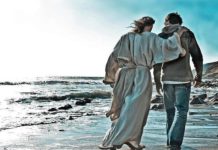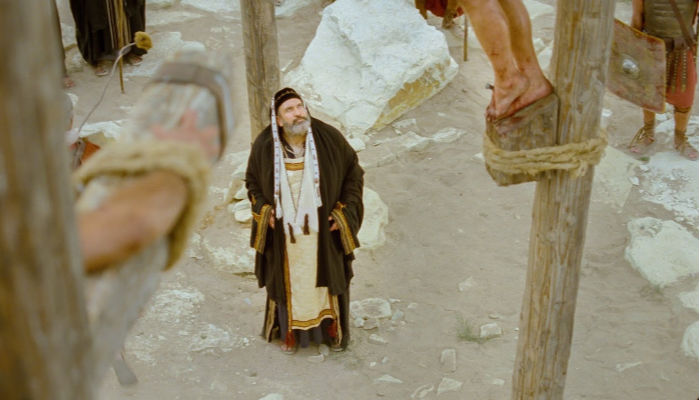
Ours isn’t the only Christian church to post a schedule of the final week of Christ’s life during the Easter season. Knowing that the Jewish Sabbath is on Saturday and that Christ’s body was taken down from the cross because the Sabbath was nigh, Christians have assumed that He was crucified on a Friday. The normal Jewish Sabbath begins at sundown Friday night.
However, it takes more research into and experience with Judaism to truly visualize how sabbath days line up during Jewish holidays. As a Jewish convert to the Church who lived in Israel for 8 years, I have added to my experience…and to my research. During one Jewish holiday in Israel (Rosh HaShanah) we celebrated three sabbath days in a row.
High Holy Days and Sabbaths
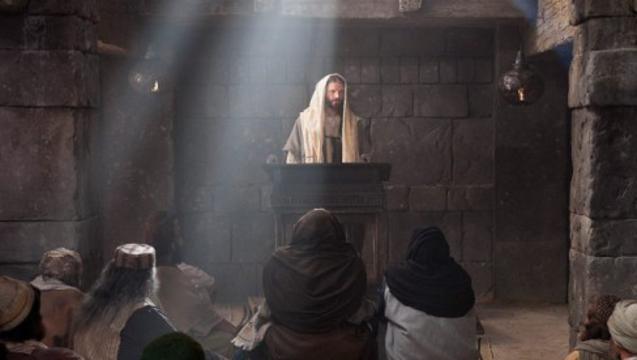 High Holy Days in Judaism are all Sabbaths. If a High Holy Day falls on a Friday or Sunday, Jews celebrate two Sabbath days in a row, and since Rosh HaShanah (Jewish civil new year, or the Feast of Trumpets) is a two-day holy festival in Israel, there can be three sabbath days in a row. The year Christ died there were two Sabbath days in a row: the first day of Passover—Thursday evening to Friday evening, and the regular Sabbath—Friday evening to Saturday evening.
High Holy Days in Judaism are all Sabbaths. If a High Holy Day falls on a Friday or Sunday, Jews celebrate two Sabbath days in a row, and since Rosh HaShanah (Jewish civil new year, or the Feast of Trumpets) is a two-day holy festival in Israel, there can be three sabbath days in a row. The year Christ died there were two Sabbath days in a row: the first day of Passover—Thursday evening to Friday evening, and the regular Sabbath—Friday evening to Saturday evening.
John the Beloved said, “The Jews therefore, because it was the preparation, that the bodies should not remain upon the cross on the sabbath day, (for that sabbath day was an high day,) besought Pilate that their legs might be broken, and that they might be taken away” (John 19:31).
The “preparation” was for the Passover. Scholars of the Center for Nazarene Judaism have determined that there were no Saturday Passovers during the 20 years surrounding Christ’s crucifixion.
The Shape of the Passover Week
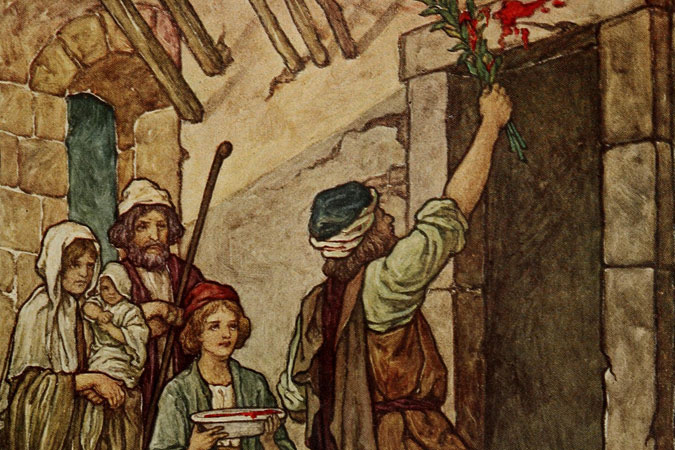 While there was a temple in Jerusalem, Jews were expected to make 3 pilgrimages to the temple each year to celebrate 7 highly symbolic holidays. In the spring, Jews would make their pilgrimage to offer sacrifices and to celebrate 3 festivals: Passover, the Feast of Unleavened Bread, and “Bikkurim”—the “honored son” first fruits offering.
While there was a temple in Jerusalem, Jews were expected to make 3 pilgrimages to the temple each year to celebrate 7 highly symbolic holidays. In the spring, Jews would make their pilgrimage to offer sacrifices and to celebrate 3 festivals: Passover, the Feast of Unleavened Bread, and “Bikkurim”—the “honored son” first fruits offering.
Christ created the Law of Moses as a schoolmaster law to testify of Him and to teach the principles of sacrifice and repentance—both foundational, Aaronic Priesthood principles. In the wilderness, He dictated the holy holidays and their patterns except for the Passover, which He established just before the Israelites left Egypt.
In preparation for the Exodus, the Lord moved the religious new year from the fall to the spring month of Nisan (also called Aviv). He scheduled the Passover offering for the 14th of Nisan. The Israelites were to take a baby lamb into each household on the 10th, so they would become attached to it and so that sacrificing it would be an act of sorrow. They sacrificed the lambs on the 14th and painted lamb’s blood on the lintels of their doorways to protect them from the destroying angel.
On the 15th of Nisan, the first day of the Feast of Unleavened Bread, the Israelites left Egypt. Because of their haste, their loaves did not have time to rise, and their bread was unleavened. Since the Feast of Unleavened Bread lasts one week, we now have an 8-day holiday.
There was one more holy day commanded by the Lord. He said to celebrate it on “the day after the Sabbath that falls during Passover/Feast of Unleavened Bread.” Do you see why this would result in thousands of years of arguing among Jewish scholars? Did the Lord mean the day after the normal Sabbath, or the day after the High Holy Day Sabbath? Jews still don’t agree, so they schedule this minor observance for the 16th of Nisan.
The Special Message of Bikkurim
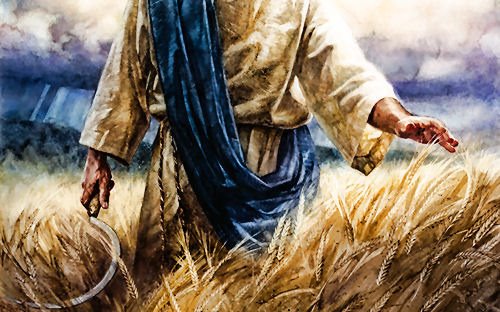 If the Lord meant the day after the normal Sabbath, then Bikkurim would always fall on a Sunday. Preparations for Bikkurim began weeks before it occurred. The priests would plant a small field of barley close to the temple. They were not allowed by the Lord to water, weed, or care for this barley at all—it had to “grow up unto itself.”
If the Lord meant the day after the normal Sabbath, then Bikkurim would always fall on a Sunday. Preparations for Bikkurim began weeks before it occurred. The priests would plant a small field of barley close to the temple. They were not allowed by the Lord to water, weed, or care for this barley at all—it had to “grow up unto itself.”
As the Jews gathered in Jerusalem to sacrifice their Paschal lambs, they brought barley with them, but it was from the previous year’s harvest. Although there had been a new barley harvest in the spring, they couldn’t eat from it until the Bikkurim offering was performed.
The high priest would go down into the field surrounded by interested onlookers, who would give their common consent when the priest found the most perfect sheaf of grain. He would set this sheaf apart by tying it with a flaxen cord. Then he would harvest it and take it to the temple to offer as a wave offering. After that wave offering, the Jews could partake of their new barley harvest. The wave offering guaranteed a fine harvest until Passover the following year.
This wave offering was offered as Christ rose from the dead on Sunday, during the Feast of Unleavened Bread. This was also the Sunday that Elijah visited Joseph Smith and Oliver Cowdery in the Kirtland Temple to bestow the sealing power. Christ instituted the resurrection, the harvest of souls unto immortality, and the sealing power enables another kind of harvest, a harvest of eternal families.
Following Christ to the Cross
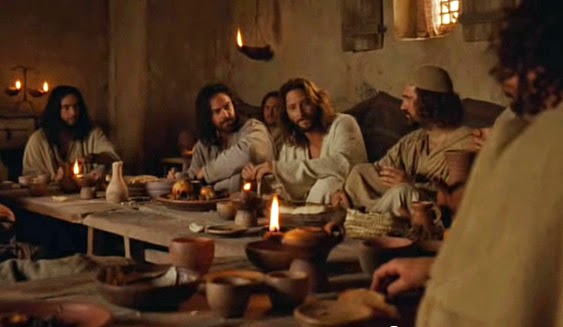 So, Christ shared a Passover feast with His apostles on Wednesday night, when He established the symbolism of the sacrament. Why did He celebrate one night earlier than everyone else? When Christ commanded the entire 3-festival Passover celebration, it was to last 8 days, but by the time He was born, the Jews had contracted it to 7 days. Christ, His disciples, and the Essenes followed the old pattern.
So, Christ shared a Passover feast with His apostles on Wednesday night, when He established the symbolism of the sacrament. Why did He celebrate one night earlier than everyone else? When Christ commanded the entire 3-festival Passover celebration, it was to last 8 days, but by the time He was born, the Jews had contracted it to 7 days. Christ, His disciples, and the Essenes followed the old pattern.
Christ left that Wednesday Passover feast to suffer in Gethsemane and then to be betrayed and arrested. He was thrust before Herod once and Pilate twice, flogged and mocked. He was crucified on Thursday afternoon. Thus, Christ was crucified at the same time as most of the lambs in the temple were sacrificed. He was taken down from the cross before sundown on Thursday for the High Holy first day of Passover Week. He was in the tomb a full three days and three nights. He rose the morning of Bikkurim, the Honored Son wave offering.
Richard K. Scott wrote a paper showing that Christ was crucified on Thursday using the Book of Mormon account. You can find it in the Perks section of ThirdHour.




